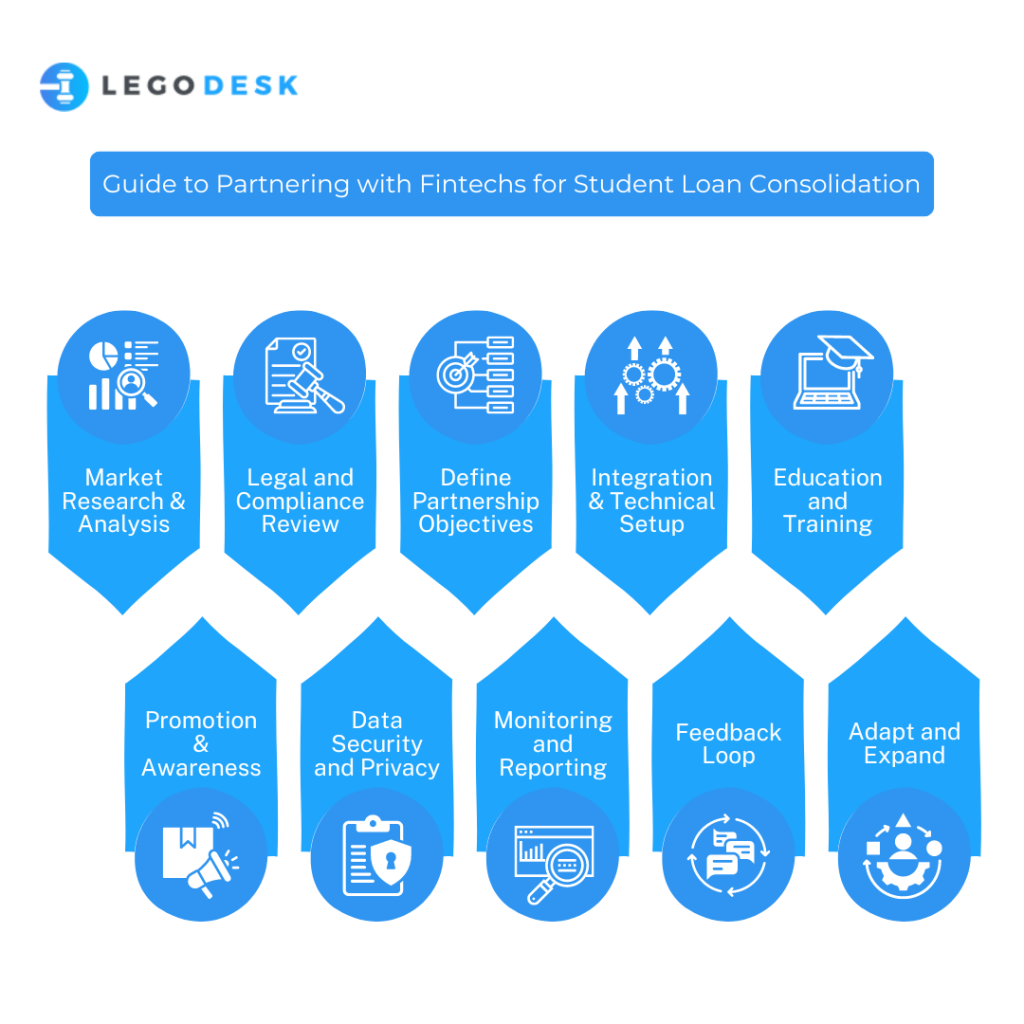Unlocking New Revenue Streams: Partnering with Fintechs for Student Loan Consolidation
In an era marked by rising student loan debt and evolving financial technologies, educational institutions are seeking innovative ways to address the financial challenges faced by their students. One promising avenue is to forge partnerships with fintech companies specializing in student loan consolidation. This strategic move not only unlocks new revenue streams for the institution but also provides a valuable service to students struggling with debt.
The Landscape of Student Loan Debt
As of the latest available data, student loan debt in the United States has surpassed $1.5 trillion, burdening millions of students and graduates with a financial anchor that can impede their progress in various aspects of life. In such a climate, educational institutions have a unique opportunity to step in and offer practical solutions.
The Fintech Solution
Fintech companies, with their innovative approaches to financial services, have emerged as key players in alleviating the student debt crisis. These firms specialize in leveraging technology to streamline financial processes, making them more accessible and cost-effective for consumers.
Step-by-Step Guide to Partnering with Fintechs for Student Loan Consolidation

1. Market Research and Analysis
Before diving into a partnership, thorough market research is crucial. Identify fintech companies that have a strong track record in student loan consolidation. Evaluate their reputation, customer reviews, and compliance with industry regulations.
2. Legal and Compliance Review
Engage legal experts to ensure that the partnership aligns with the institution’s mission and complies with all relevant laws and regulations. Establish clear contractual agreements detailing responsibilities, revenue-sharing models, data privacy policies, and termination clauses.
3. Define Partnership Objectives
Clearly define the goals of the partnership. Are you aiming to provide students with more affordable loan consolidation options, improve financial literacy, or generate revenue for the institution? This clarity will guide the entire process.
4. Integration and Technical Setup
Work closely with the chosen fintech partner to seamlessly integrate their platform with your existing systems and infrastructure. This integration should be smooth and user-friendly for students, faculty, and administrative staff.
5. Education and Training
Provide comprehensive training to staff, especially financial aid advisors, on effectively using the fintech platform and assisting students in the loan consolidation process. This step is crucial for ensuring that everyone involved is equipped to navigate the new system.
6. Promotion and Awareness
Develop a comprehensive marketing and communication plan to promote the new service to students. Consider organizing workshops, webinars, and informational sessions to educate students about the benefits of loan consolidation.
7. Data Security and Privacy
Implement robust data security measures to protect sensitive student information. It is imperative that both the educational institution and the fintech partner comply with industry-standard security protocols and privacy regulations to maintain trust.
8. Monitoring and Reporting
Establish key performance indicators (KPIs) to track the success of the partnership. These could include metrics like the number of students using the service, average savings achieved, and customer satisfaction scores. Regular reporting ensures that progress is transparent and measurable.
9. Feedback Loop
Collect feedback from students, staff, and faculty to continuously improve the partnership. Address any issues that may arise promptly, demonstrating a commitment to the well-being of the student body.
10. Adapt and Expand
Based on the initial results and feedback, consider expanding the partnership or exploring other fintech solutions that can further benefit your students and institution. This iterative process ensures that the institution remains at the forefront of providing effective financial solutions.
The Student-Centric Approach
Throughout the entire partnership, it is crucial to maintain a student-centric approach. Transparency, trust, and the well-being of the students should be at the core of every decision and action. By offering a valuable service like student loan consolidation through a reputable fintech partner, educational institutions not only generate revenue but also actively contribute to reducing the financial burden on their students, ultimately enhancing the overall educational experience.
Building a Foundation: Market Research and Legal Considerations
Navigating the Fintech Landscape
Choosing the right fintech partner is a critical first step. Thorough market research is essential to identify reputable companies with a proven track record in student loan consolidation. This diligence sets the foundation for a successful partnership.
Legal Safeguards and Ethical Practices
Engaging legal experts is paramount to ensure that the partnership aligns with the institution’s values and complies with all applicable regulations. This step mitigates potential risks and establishes a framework for a mutually beneficial collaboration.
From Vision to Reality: Defining Partnership Objectives
Defining the objectives of the partnership is paramount. Are we primarily focused on providing students with more affordable loan consolidation options, or is our aim to generate revenue for the institution? Clarity of purpose guides the entire process.
Seamlessly Integrated: Technical Setup and Education
Bridging the Technological Divide
Collaboration with the chosen fintech partner must be seamless. The integration of their platform with existing systems demands careful planning and execution. A user-friendly interface is essential for students, faculty, and staff alike.
Equipping Staff for Success
Comprehensive training is key, especially for financial aid advisors who will be at the forefront of assisting students. Ensuring that staff are proficient in navigating the new system is fundamental to its success.
Empowering Students: Promotion, Awareness, and Education
A well-crafted marketing and communication plan is essential to ensure students are aware of the new service. Workshops, webinars, and informational sessions serve as valuable educational tools, empowering students to make informed financial decisions.
Conclusion
Partnering with fintech companies for student loan consolidation is a forward-thinking strategy that addresses a pressing issue while creating a new revenue stream for educational institutions. Through careful research, legal considerations, and a focus on student well-being, institutions can successfully implement and scale this partnership. By leveraging technology and innovation in the financial sector, educational institutions can play a pivotal role in alleviating the student debt crisis and empowering their students for a brighter financial future.
Try our Debt Resolution solutions today Request a Demo